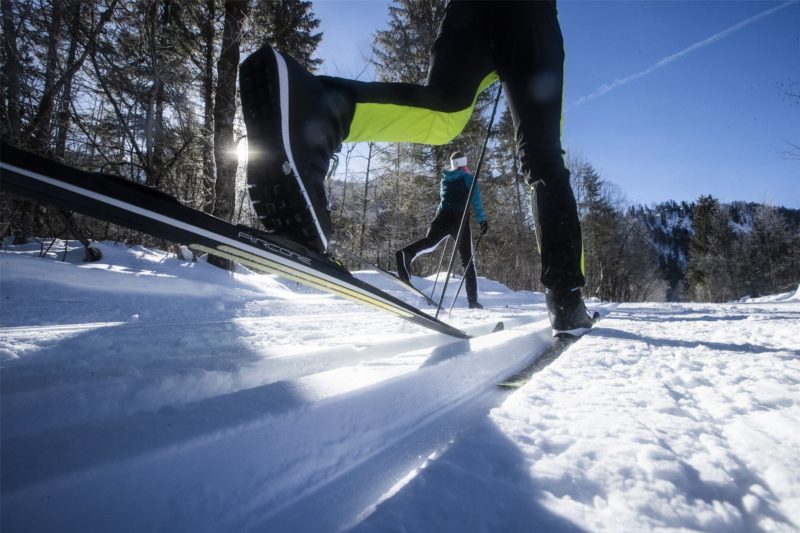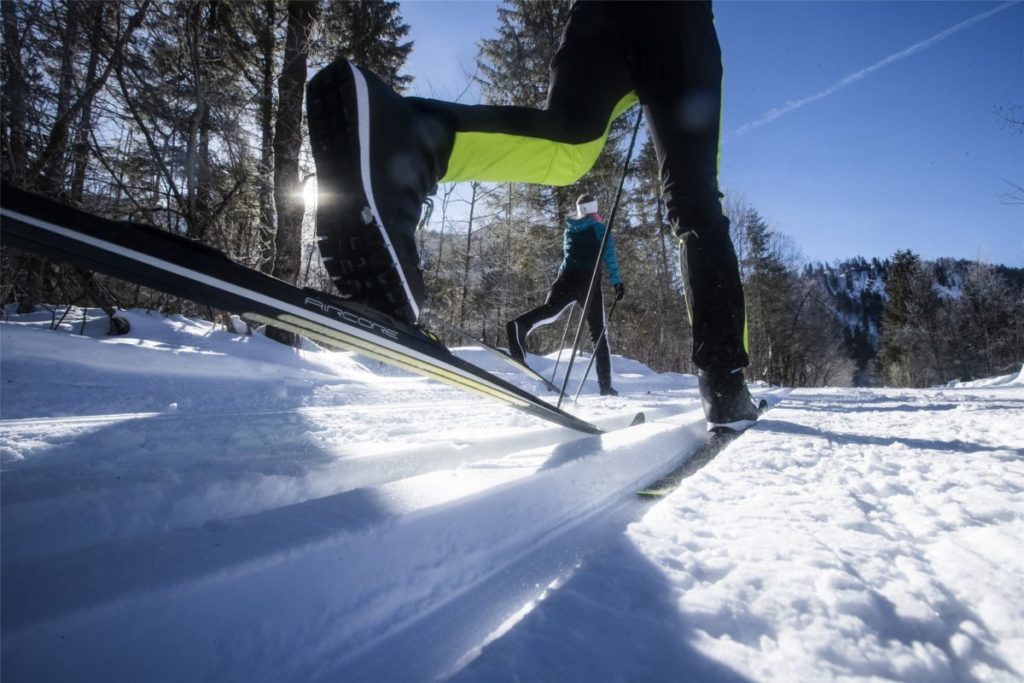Nine years into the skin ski revolution, both the interest from skiers and the selection of skin skis in the market continues to grow. But just because skin skis are growing in popularity, does that mean that they are right for you?


Based on our experience as shop owners, and evidenced by our demo center and a multitude of user feedback, we think skiers should consider buying a pair of skin skis if they fall into one of two categories: First, the no-wax skier who wants a step up in performance from a traditional mechanical base (also known as “fish-scale” or “crown” base). Second, the waxable skier who wants a no-wax ski that works nearly as well as a wax ski, and even better than a wax ski in some conditions.
No-Wax Skier
For the no-wax skier, let’s first compare the performance of a mechanical base versus a skin base. On warm (+30F) snow, or on days where there is fresh-fallen, high humidity snow, the most frustrating part of a mechanical base is when snow clumps up on the kick zone, which makes the skis feel like extra long snowshoes (tip: fluoronated rub-on glide wax prevents this problem). Skin skis, on the other hand, do not face this clumping problem, because the skins are manufactured with sophisticated materials like Teflon, which do a great job of repelling that build-up. So right out of the gate, skin skis avoid a frustrating problem that has always plagued mechanical-based skis.
For grip performance, in some conditions, the mechanical bases are right on par with skins; however, we’ve found that across a wide range of snow conditions, the skins give more consistent and reliable kick, especially in hard and icy tracks. Perhaps it’s the thousands of pliable skin fibers that grab onto ice and crust. Whatever it is, the improved traction of skin skis is noticeable.
As for glide, in most conditions, skin skis have better glide than mechanical-based skis. By design, the skin grip sections are shorter than mechanical grip sections, leaving a greater ratio of the ski base dedicated to glide (longer tips and tails). This shorter grip zone means less drag and longer, smoother, quieter glide. The only time we have found the skins to create drag is in especially soft snow, like when a skier is gliding down a fast hill in a well-packed track, and then hops onto the softer snow of the skate lane and immediately feels that drag of the skins (tip: lean back on your heels). Because skins tend to drag in softer snow, they are not a great choice for breaking your own trail. Currently, the widest Skin skis available are the Atomic Mover Skintec at 51mm (pg 8), and the Rossignol R-Skin Evolution at 51mm (pg 6).
Because of the shortened grip zone on skin skis, we have found that having adjustable bindings to help dial in the kick is extremely valuable. Steve Reeder, Head of Nordic for Fischer North America, agrees: “Our approach to optimizing the performance of the Twin Skins is the easy adjustability of the Turnamic bindings to find the ideal balance of grip and glide.”
All in all, in most conditions, skin skis outperform mechanical-based skis on grip and glide, especially with an adjustable binding.
Waxable Skiers
Now for the waxable skiers. It is widely accepted that a properly-waxed ski will far outpace a traditional no-wax ski when it comes to glide. But will it beat the newer, high-performance skin skis, like the Fischer Twin Skin Speedmax? The answer depends on snow conditions, and honestly, on a skier’s ability to wax well. In easy waxing conditions – where the temperature is cold and consistent and the snow is not too icy – a well-waxed ski will still outperform a skin ski.
However, skin skis can and often do outperform waxable skis when wax conditions are especially challenging and/or changing. In reality, many skiers face challenging and/or changing wax conditions more often than they’d probably like. Generally, longer ski sessions have a higher likelihood of changing snow conditions, as do ski sessions in the early and late season. Plus, on any day, skiing between wooded/shaded trail and open/sunny trail can make it nearly impossible to properly wax for cold packed snow one minute and warm soft snow the next. Sure, some skiers enjoy and excel at the challenge of waxing on days like that. But many skiers would rather skip the headache if they knew they had a really reliable, great-performing no-wax option, especially one that may outperform their waxed skis anyway. And that is exactly what a good skin ski has to offer. Skin skis provide consistently good performance in basically all conditions, but in changing conditions, they actually have the potential to outperform a wax ski.
Bottom Line
Are skin skis the silver-bullet-holy-grail no-wax skis that waxable skiers have been waiting for? It depends on the conditions, but it also depends on the skier. At minimum, skin skis make a fantastic option for training, and provide as close a feel to wax skis as we’ve ever seen from a no-wax. At best, skin skis perform so well that they are actually being used by good skiers on the race course in challenging wax conditions. Your best bet is to head to Cross Country Ski Headquarters and try a pair, or speak to one of our pros about what skin skis might be best for you. You never know, once you get a pair, you may reach for them more often than you think!

